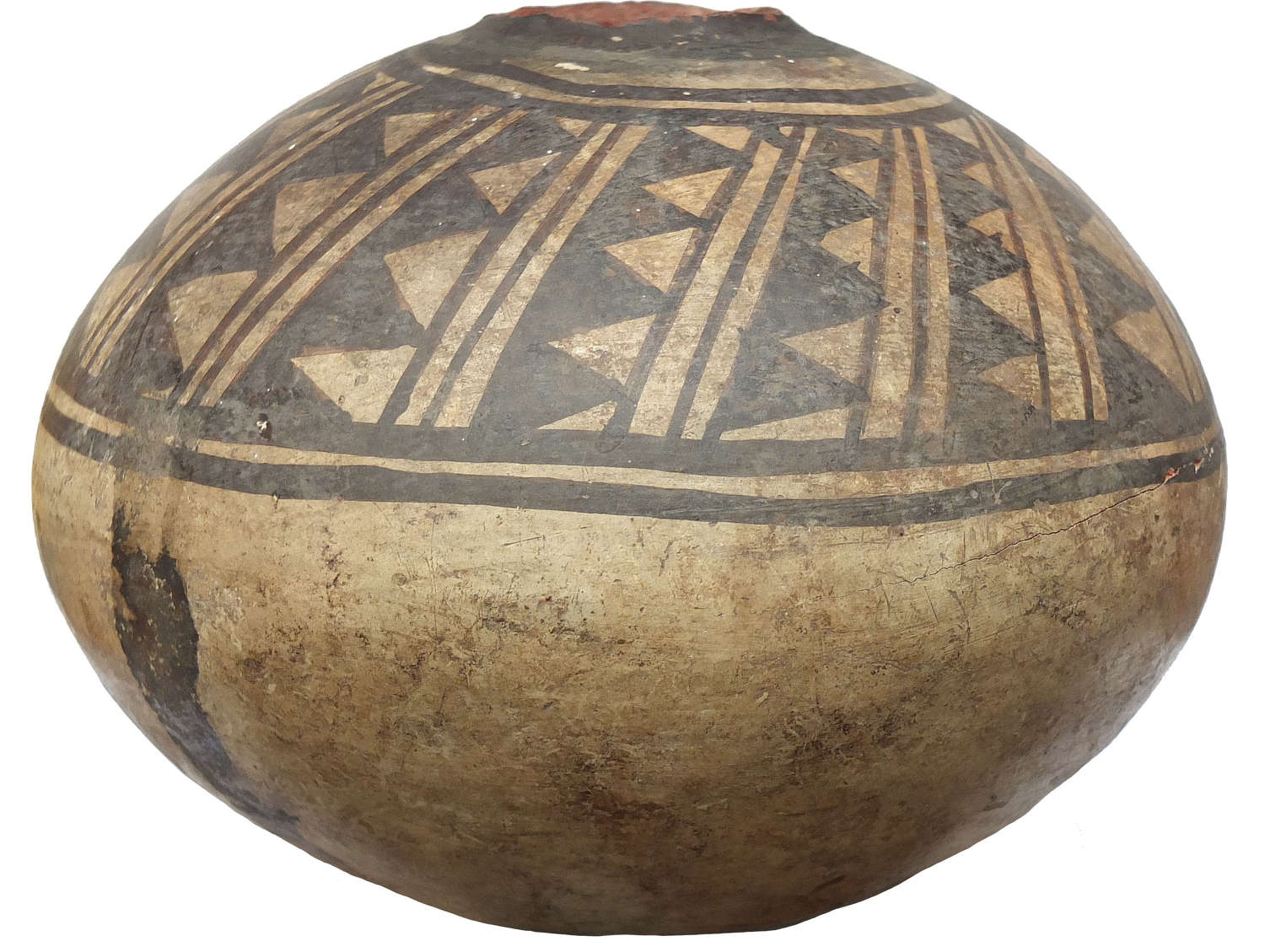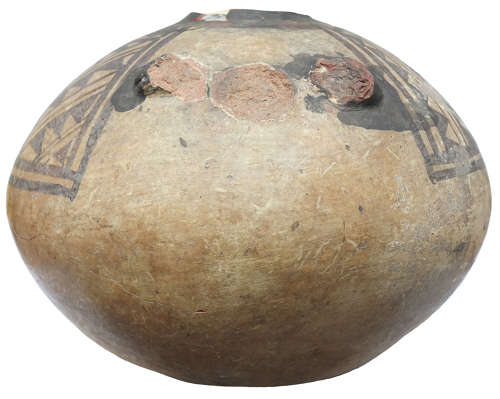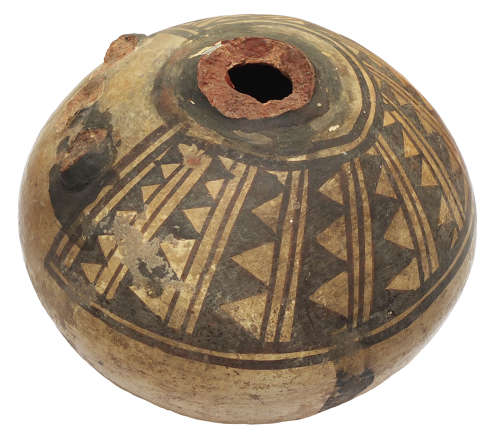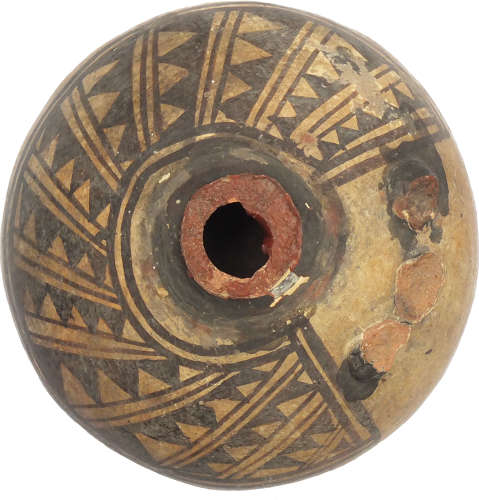Description: A globular sub-spherical pot with flattened base, the narrow neck and handles now missing. The pot covered with cream slip on a reddish-brown clay body. The upper half decorated by two brown painted bands around the mid-body and around the neck aperture, the space between filled with a repeating series of oblique lines and interlocked infilled and open triangles, all in brown.
Size: 132 mm/5.2 ins. in diameter and 90 mm/3.5 ins. in height
Culture: Peru, Chancay
Date: c. 1200-1450 A.D.
Provenance: Reputedly collected by J.H. Spottiswoode in Northern Peru in 1907. Previously with Astarte Gallery, Britannia Hotel, Grosvenor Square, London, in the 1980s.
Background: J.H. Spottiswoode acquired a collection of pottery in Northern Peru in 1907 and presented most of it to the British Museum in 1921. He retained a few pieces (of which this is reputedly one). The British Museum catalogue has descriptions and drawings of the collection and a note in H.J. Braunholtz's hand : "All from Northern Peru. The bulk of the pottery was collected by the donor in the Pacasmayo region. Some north of Trujillo, the red ware up the valleys, the black near the coast. Stone objects from the highlands (caves) near Moyobamba" (information provided by Audrey Davies (died 2011), Astarte Gallery).
J.H. Spottiswoode was an amateur archaeologist who collected a large group of precolumbian vessels (apparently mainly through purchase) during a visit to the Pacasmayo region in Peru. The donation to the British Museum comprised over 600 pieces, mainly Chimu and Chimu-Inca funerary pots. The British Museum retained 272 items and dispersed the rest to other UK museums.




